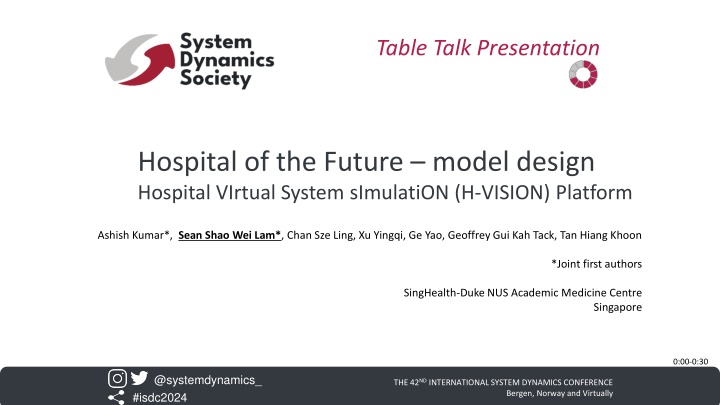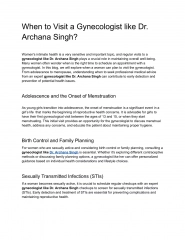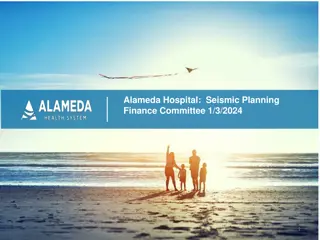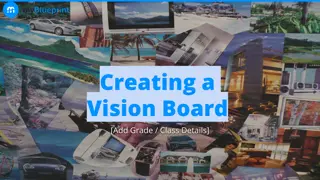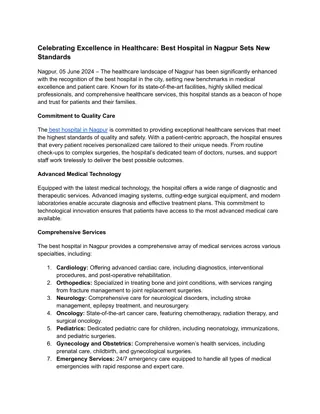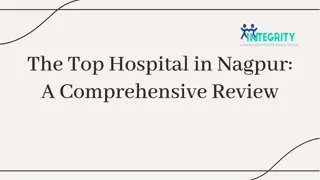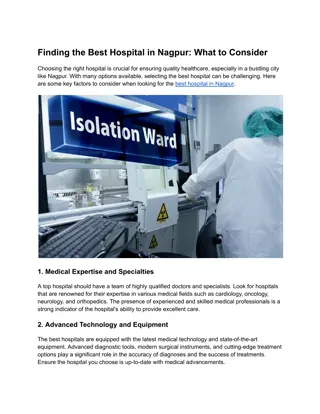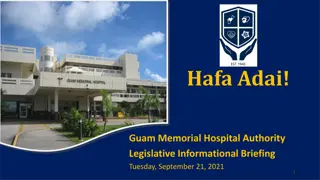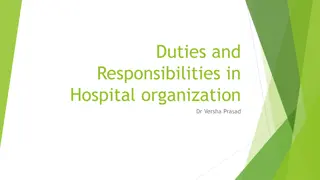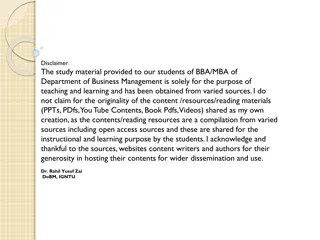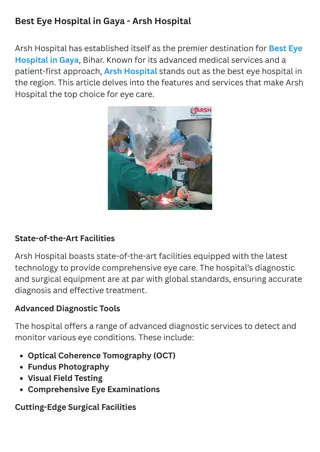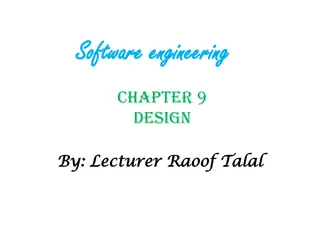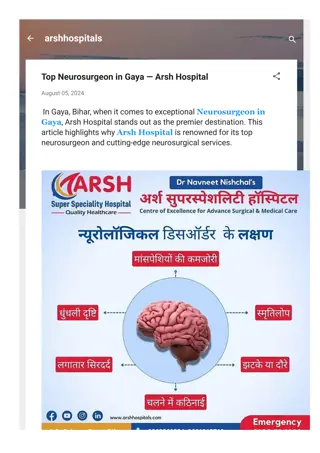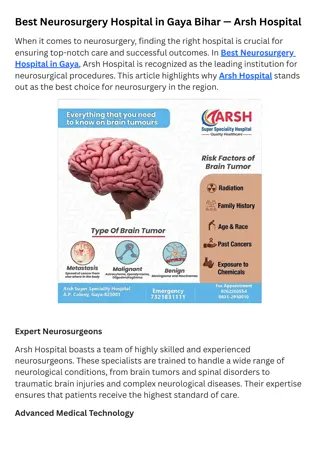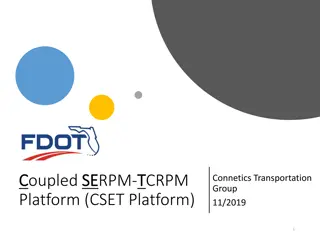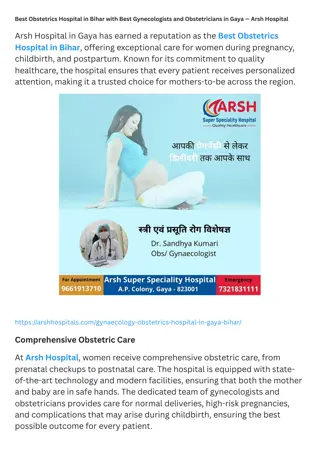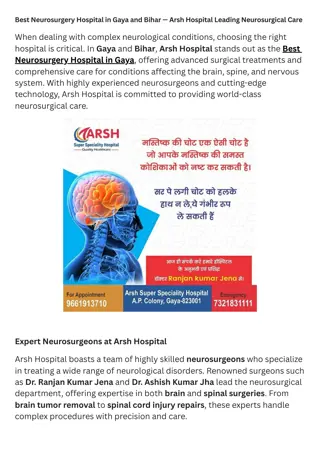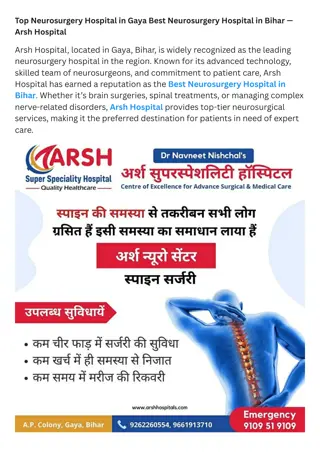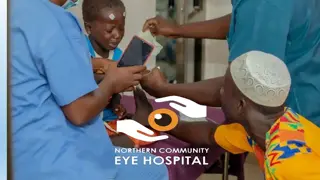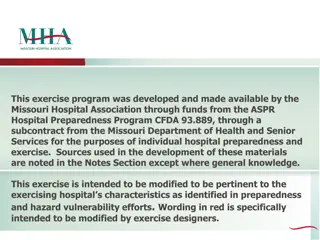Hospital of the Future Model Design: H-VISION Platform
Hospital of the Future model design project focuses on responding to ageing population challenges with innovative healthcare solutions. The team's approach includes long-range planning, stratified analysis, and simulation modeling to address key aspects such as patient forecasts, capacity estimations, and stakeholder engagement. The project aims to shape a modern healthcare system that integrates technology, agility, and staff well-being for sustainable healthcare delivery in the future.
Download Presentation

Please find below an Image/Link to download the presentation.
The content on the website is provided AS IS for your information and personal use only. It may not be sold, licensed, or shared on other websites without obtaining consent from the author.If you encounter any issues during the download, it is possible that the publisher has removed the file from their server.
You are allowed to download the files provided on this website for personal or commercial use, subject to the condition that they are used lawfully. All files are the property of their respective owners.
The content on the website is provided AS IS for your information and personal use only. It may not be sold, licensed, or shared on other websites without obtaining consent from the author.
E N D
Presentation Transcript
Table Talk Presentation Hospital of the Future model design Hospital VIrtual System sImulatiON (H-VISION) Platform Ashish Kumar*, Sean Shao Wei Lam*, Chan Sze Ling, Xu Yingqi, Ge Yao, Geoffrey Gui Kah Tack, Tan Hiang Khoon *Joint first authors SingHealth-Duke NUS Academic Medicine Centre Singapore 0:00-0:30 @systemdynamics_ #isdc2024 THE 42ND INTERNATIONAL SYSTEM DYNAMICS CONFERENCE Bergen, Norway and Virtually
Problem: Hospital of the Future Context Rapid transition to First World High life expectancy, costs controlled (but rising) Ageing population with stressed health system A new general hospital to go live in 2035 Brief to modelling team Keep client s vision in mind: Respond to ageing, not more of the same ; agility; productivity; alternate models of care; staff wellbeing; hospital gravitating towards quaternary Time horizon: ~80 Years Keep work grounded. Landing points : How many beds, emergency treatment units, operating theatres, These results will form part of brief to architects and medical planners 0:30-2:00 @systemdynamics_ THE 42ND INTERNATIONAL SYSTEM DYNAMICS CONFERENCE THE 40TH INTERNATIONAL SYSTEM DYNAMICS CONFERENCE #isdc2022 #isdc2024 Bergen, Norway and Virtually Virtually everywhere!
Approach: Long range planning * Stratified by Source, Bed Type, Age-Group and HORNC indicator ** stratified by Age Group (5-year cohort) and HORNC indicator ++ stratified by Age Group (5-year cohort), HORNC indicator and acuity (P1P2 and P3P4) Ageing New SOC visits** per 1000 pop per year Births Deaths Resident Population, stratified by age Net in- migration Follow-up SOC visits** per 100 discharged inpatients Inpatient Admissions* per 100 ED patients ED attendances each year Inpatients each year SOC visits each year ED attendances++ per 1000 pop per year Abbreviations SOC = Specialist Outpatient Centre ED = Emergency Department Surgeries** per 100 Inpatient discharges Inpatient Admissions* per 100 SOC New visits Surgeries each year 2:00-3:30 @systemdynamics_ THE 42ND INTERNATIONAL SYSTEM DYNAMICS CONFERENCE THE 40TH INTERNATIONAL SYSTEM DYNAMICS CONFERENCE #isdc2022 #isdc2024 Bergen, Norway and Virtually Virtually everywhere!
Progress, Insights, and Questions (1/2) Data extraction & input estimation WG guidance on AMoC++ Qualitative mapping Simulation Model 0 Strawman Model Simulation Model 1 Population forecast Baseline patient forecasts: SOC ED Inpatient, S&P** Data required Causal Loop Diagrams Population and HSU* rates Patient and capacity forecasts under AMoC Estimated AMoC traction Length of Stay and other parameters Baseline capacity forecasts 3:30-5:00 @systemdynamics_ THE 42ND INTERNATIONAL SYSTEM DYNAMICS CONFERENCE THE 40TH INTERNATIONAL SYSTEM DYNAMICS CONFERENCE #isdc2022 #isdc2024 Bergen, Norway and Virtually Virtually everywhere!
Progress, Insights, and Questions (2/2) Q1: Design. 80-year model driven by population ageing yearly clock. Inefficiencies baked into macro-level forecasts; we intend to augment this top- down analysis with bottom-up analyses. Suggestions? Q2: Precedents and parallel work. What prior work can we draw upon? What parallel work can we learn from (and perhaps share our learnings with) ? Q3: Insight beyond numbers. Keeping EF Schumacher s criticism of The Limits to Growth study in mind, how can we extract insight beyond numbers ? {Will insert Schumacher s words here. Effectively he was saying that there is no big deal in projecting that world will run out of resources is that is built into your mental model} 3:30-5:00 @systemdynamics_ THE 42ND INTERNATIONAL SYSTEM DYNAMICS CONFERENCE THE 40TH INTERNATIONAL SYSTEM DYNAMICS CONFERENCE #isdc2022 #isdc2024 Bergen, Norway and Virtually Virtually everywhere!
